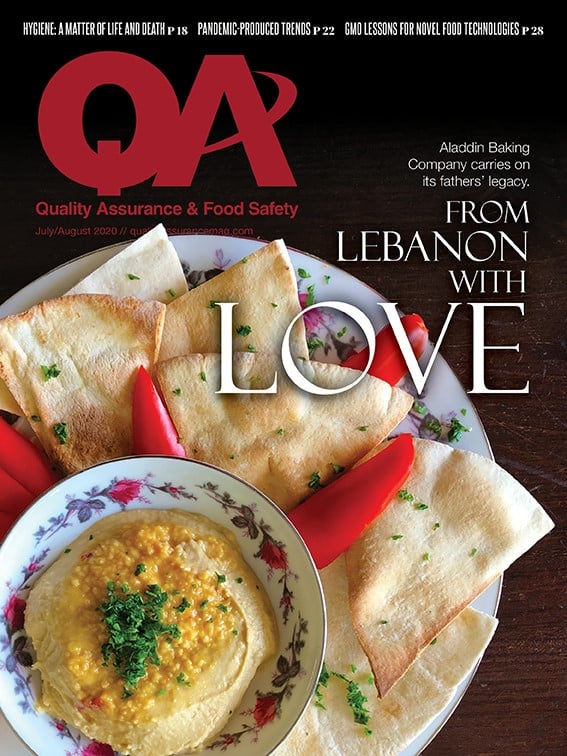
Our United Fresh food safety team had big plans for March. Listeria, recall preparedness, you name it — we had trainings lined up for every week.
Then, suddenly, everything got cancelled, and we quickly realized that this wasn’t just going to be a delay of a few weeks. We began to wonder how we’d be able to resume our educational offerings, and quickly pivoted to using virtual platforms that now expand our training portfolio.
Produce is truly a “roll up your sleeves” part of the food industry, so the hands-on workshop-style format of trainings seems to resonate with most of the participants.
If we simply did lecture-style presentations, we could easily have shifted to a series of webinars. But that’s not interactive, and anyone with any training in adult education knows that the format is not particularly effective either.
The first virtual training we conducted was perhaps the most complicated one we offer: a recall-ready workshop that includes three trainers (a food safety expert, food law attorney, and crisis communications expert) who tag team throughout a one-day training. Participants are challenged to react to an evolving situation, with each table (in the face-to-face world) acting as a recall team.
In spending many hours figuring out how to morph this into a virtual training, we found great utility in the “breakout room” function of an online service. Because of differences in time zones, and to reduce screen fatigue, we broke the course into two days. We surely spent more time prepping for this event than we would have for a live offering. But it went off without a hitch, based on the feedback we received.
We augmented our “normal” survey questions with many questions about the virtual experience, and the responses were unanimously positive. This gave us the confidence to continue our adventures in virtual produce safety education.
Another major challenge we faced was adapting our annual convention to a virtual experience. We’ve historically offered numerous produce safety educational and networking opportunities, ranging from formal presentations and panel discussions to informal “exchange” knowledge shares and food safety receptions. But we typically offered education on the expo floor to make it easy for attendees to participate,
I’ll admit that some of the more formal sessions drew only a few dozen people. The “Exchanges,” which were set for about 20 people, were often the more popular events, drawing upwards of 50 people when the discussion was focused on a produce safety topic.
So, we were amazed when shifting to a virtual convention (including the trade show, education, receptions, general sessions, etc.) drew attendance numbers that we’ve never achieved for a conventional session. Plus, there was no need for door monitors: we know exactly who attended and how long they participated in the session.
Our one-hour workshops (presentation style, with two to three speakers and 10 to 15 minutes for questions) typically drew 150-200 people per topic. The Exchanges which had been 30 minutes were transformed into one-hour online “Coffee Talks.” Our experience in using breakout rooms and polls enabled us to provide intimate conversations and increased networking for multiple small groups (10 to 15 people) concurrently discussing the same topic.
The silver lining to the abrupt halt for face-to-face education caused by the pandemic is the increased accessibility to information. People don’t have to travel to meetings. Total time out of the office, as well as expense, is reduced, particularly for attendees outside the US. Time zones also become less important.
Although junior staff may lose the opportunity to attend live trainings through these new systems, management seems to be more willing to allow them to benefit from virtual education.
The global pandemic has redefined life as we know it, and while no one would dispute the catastrophe it’s caused, when it comes to education and training within the produce industry, I’m hopeful that we’ll be more connected than ever in this virtual world.

Explore the July August 2020 Issue
Check out more from this issue and find your next story to read.
Latest from Quality Assurance & Food Safety
- Scentian Bio Wins Top Prize at IFT FIRST Startup Pitch Competition
- Evigence Debuts FreshSense to Change How Food Industry Measures Freshness
- Acme Releases Automated Scraper Strainer
- Mitzi Baum to Step Down as CEO of Stop Foodborne Illness
- USDA ARS Scientists Develop Pectin That Gels with Low-Sugar Products
- GS1 US Celebrates 50-Year Barcode 'Scanniversary' and Heralds Next-Generation Barcode to Support Modern Commerce
- New Florida Extension Agent Will Teach Stakeholders About Food Safety
- Athletic Brewing Company Announces $50 Million Equity Financing Round Led by General Atlantic





